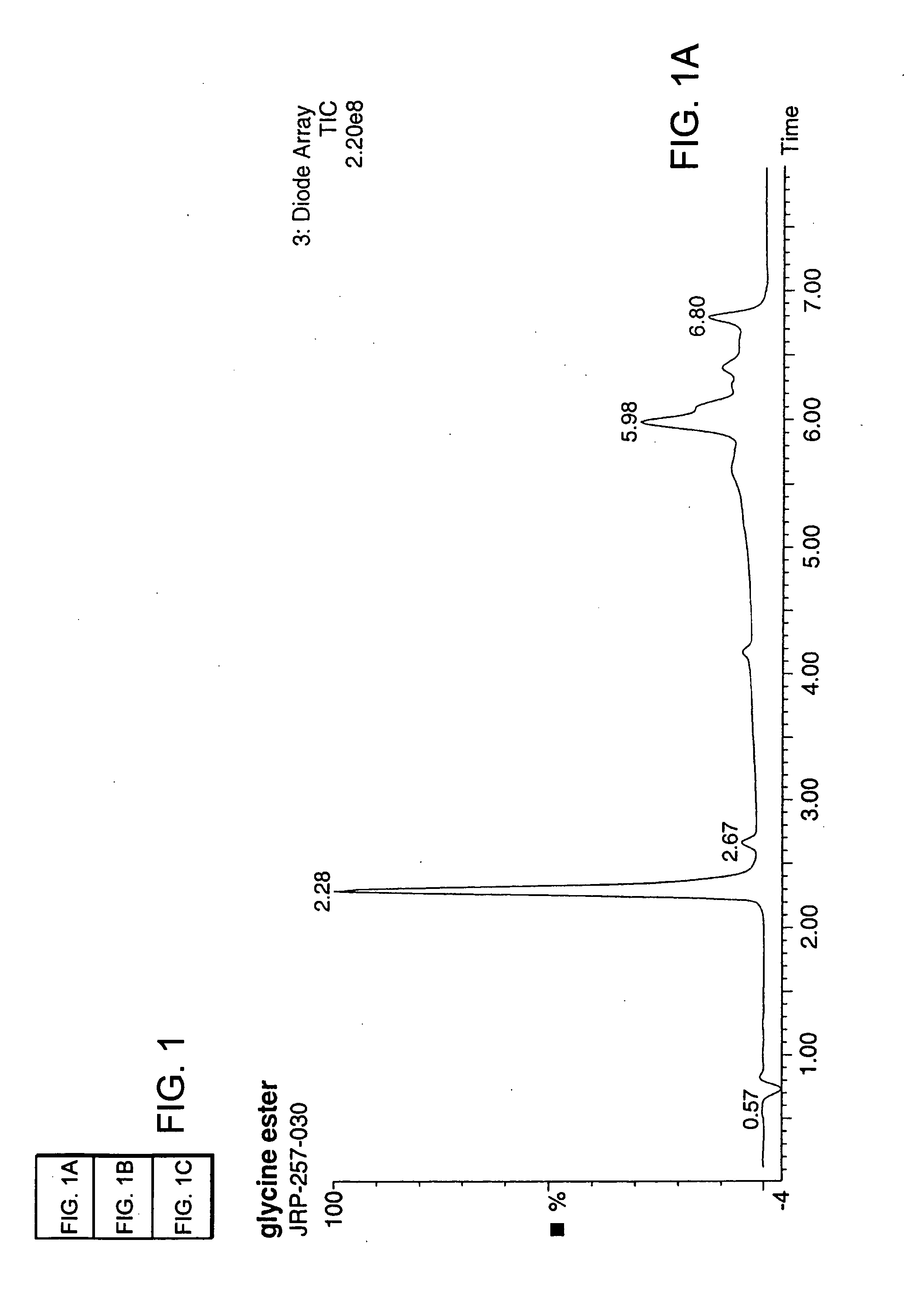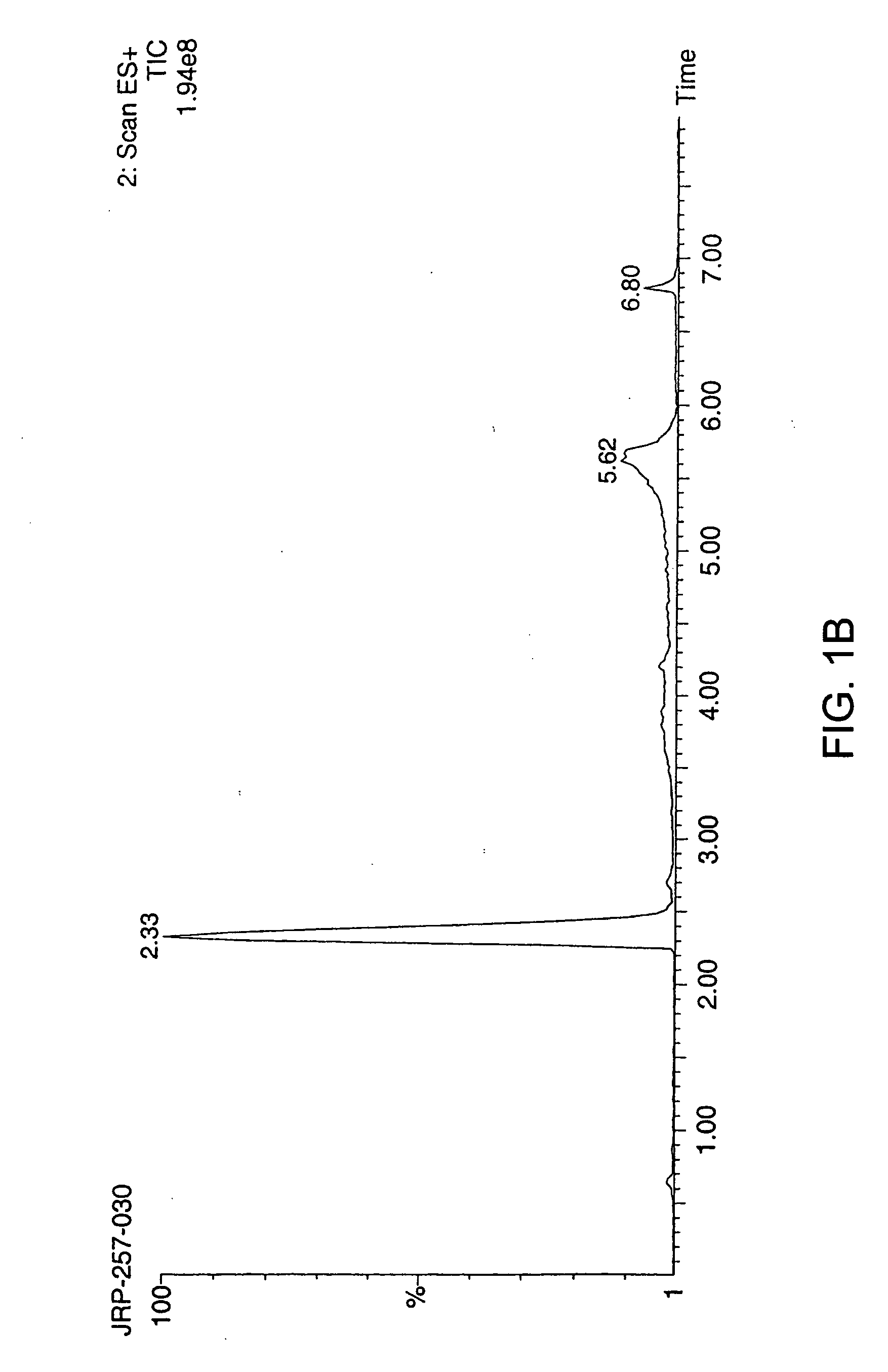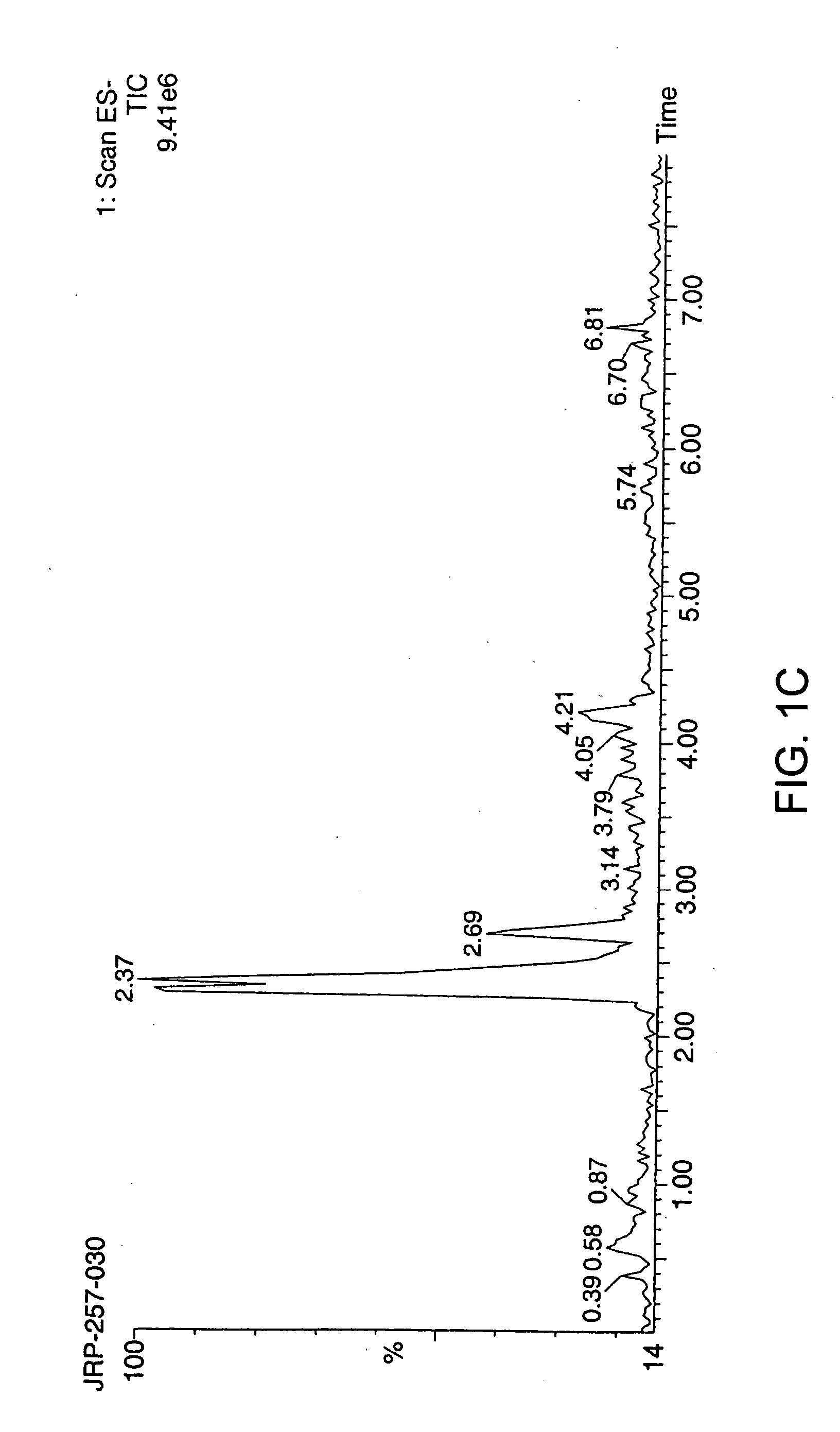Analogs of benzoquinone-containing ansamycins and methods of use thereof
an analogue and benzoquinone technology, applied in the field of analogues of benzoquinonecontaining analogues and methods of use thereof, can solve the problems of poor water solubility of geldanamycin, difficult to deliver therapeutically effective doses, and difficulty in developing an approvable agent for therapeutic applications
- Summary
- Abstract
- Description
- Claims
- Application Information
AI Technical Summary
Benefits of technology
Problems solved by technology
Method used
Image
Examples
example 1
Preparation of Air-stable Hydroquinone Derivatives of the Geldanamycin Family of Molecules
[0714]
[0715] Compound of Formula (1a) (1.0 equiv) is dissolved in dichloromethane (0.02 M) and stirred with a 10% aqueous solution of sodium hydrosulfite (1:1; DCM: aqueous solution). The solution is stirred for 30 minutes. The organic layer is then removed via syringe and the aqueous solution is extracted once more with dichloromethane. The combined organic solutions are washed with brine and then added directly to a solution of an acid chloride (1.0 equiv) in dichloromethane (0.001 M). The reaction mixture is stirred for 12 h and poured into a solution of dichloromethane. The organic layer is then washed with additional water (2.0 mL); the combined aqueous layers are then lyophilized to yield the product.
example 2
Preparation of Air-stable Hydroquinone Derivatives of the Geldanamycin Family of Molecules
[0716]
[0717] Compound of Formula (1a) (0.25 mmol, 1.0 equiv) is dissolved in dichloromethane (3 mL) and stirred with a 10% aqueous solution of sodium hydrosulfite (1.5 mL). The solution is stirred for 30 minutes. The organic layer is then removed via syringe and the aqueous solution is extracted once more with dichloromethane. The combined organic solutions are diluted with 3 mL of EtOAc, washed with brine and further dried by azeotropic removal of residual water and EtOAc under reduced pressure (3 mL of solvent total removed under reduced pressure). To this solution is added a solution of an acid in an organic solvent. The resulting solution is then cooled to −5° C. and an acid (0.25 mmol) in toluene is added (0.2 mL). A solid slowly crashes out of solution. MTBE (3 mL) is then added and the resulting mixture is allowed to warm to RT and is stirred at this temperature for 50 minutes. The soli...
example 3
Preparation of Dimethylamino Acetate Co-Salt of the Hydroquinone of 17-AAG
[0718]
[0719] 17-Allylaminogeldanamycin (1) (9.1 mg, 0.016 mmol, 1.0 equiv) was dissolved in 1.0 mL dichloromethane and stirred with a 10% aqueous solution of sodium hydrosulfite (1.0 mL). The deep purple solution turned yellow after 5 min and the mixture was stirred for an additional 25 min. The organic layer was removed via syringe and the aqueous solution was extracted with an additional 0.30 mL dichloromethane. The combined organic solutions were washed with brine (1.0 mL) and then added directly to a solution of dimethylaminoacetyl acid chloride hydrochloride (2.5 mg, 0.016 mmol, 1.0 equiv) in 0.20 mL dichloromethane. The reaction mixture was stirred for 2 h and poured into a separatory funnel with 3.0 mL water. The organic layer was extracted and then washed with additional 2.0 mL water. The combined aqueous layers were lyophilized to yield 2 as a white fluffy powder (7.1 mg, 0.011 mmol, 66% yield). The ...
PUM
 Login to View More
Login to View More Abstract
Description
Claims
Application Information
 Login to View More
Login to View More - R&D
- Intellectual Property
- Life Sciences
- Materials
- Tech Scout
- Unparalleled Data Quality
- Higher Quality Content
- 60% Fewer Hallucinations
Browse by: Latest US Patents, China's latest patents, Technical Efficacy Thesaurus, Application Domain, Technology Topic, Popular Technical Reports.
© 2025 PatSnap. All rights reserved.Legal|Privacy policy|Modern Slavery Act Transparency Statement|Sitemap|About US| Contact US: help@patsnap.com



